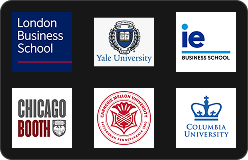
Top MEM Schools in USA: Why Everyone’s Talking About This Degree
What Is a MEM Degree and Why Is It So Popular?If you're a STEM graduate who wants to lead teams, manage projects, and s…
Table of Contents

Stanford University was founded in 1885 and is one of the top universities in the world for science, engineering, and technology. It's located in the heart of Silicon Valley, California, which is home to major tech companies like Google, Hewlett-Packard, and Instagram.
Being in Silicon Valley gives Stanford students access to companies, mentors, and job opportunities that few other schools can offer. It’s a great place for future leaders in tech and business.
Stanford’s MEM program helps engineers become future-ready leaders. MEM stands for Master of Engineering Management. This program is built for students who want to mix their technical knowledge with business and leadership skills.
It’s perfect for people who don’t want to leave engineering behind but still want to grow into roles like product manager, operations leader, or R&D director.
Graduates of the Stanford University MEM program are trained to lead in industries like technology, manufacturing, consulting, and more. The program shapes students into professionals who can solve problems, lead teams, and drive innovation.
The Stanford MEM program stands out because it blends engineering with leadership, communication, and business training. It’s not just about solving technical problems—it’s about leading people, making decisions, and creating impact in the real world.
The program includes both engineering and business-focused courses. Students learn how to:
This combination helps students grow into leaders who understand how engineering and business work together.
MEM students learn from professors who are:
Students often get to:
Stanford’s location gives MEM students an edge. They benefit from:
Even if you don’t plan to start your own company, you’ll gain the mindset and tools to think like an entrepreneur.
Stanford’s alumni network is spread across the world. MEM students can connect with:
This network is useful for job referrals, mentorship, career advice, and long-term growth.

The Stanford MEM program gives students a strong base in engineering management, with the freedom to choose topics that match their career goals. It’s designed for those who want to grow into leadership roles without leaving the technical side of things.
These courses help students build the foundation they need to lead engineering teams and projects.
Some of the core subjects include:
These courses train students to lead with confidence in tech-focused environments.
Students can choose electives that match their interests and future job plans.
Popular elective areas include:
This flexibility helps students create a path that fits their personal and professional goals.
Toward the end of the program, students work on a capstone project or thesis. This lets them apply everything they’ve learned to solve a real-world challenge.
Examples of past projects include:
The capstone shows employers that students are ready to lead real projects in real companies.
The MEM program can be completed in different formats, depending on your pace and availability.
| Study Option | Duration | Description |
|---|---|---|
| Full-Time | 18–24 months | Most common track for MEM students |
| Accelerated | ~12 months | Finish faster with a heavier workload |
| Part-Time | Varies | For working professionals (if offered) |
Students usually take 3–4 courses per term. Some also choose to do internships or research during the summer.
Getting into the Stanford University MEM program is competitive, but not impossible. The university looks for students who are strong in both academics and leadership.
To apply, you should have:
Stanford also looks for students who show curiosity, initiative, and the potential to lead in the future.
Here’s what you’ll need to submit:
Stanford follows a set admissions schedule each year. Always check the current dates, but here’s a general idea:
| Application Type | Deadline (Approximate) |
|---|---|
| Early Action | Mid-November |
| Regular Decision | Early January |
| Final Deadline | February or March |
If your application is shortlisted, you may be invited for an interview.
It’s a good idea to be clear, confident, and genuine. Practice talking about your resume and what excites you about the program.
The Stanford MEM program is one of the most prestigious in the world, and the tuition reflects the quality, faculty, and location of the university. While the cost may seem high, Stanford offers several financial aid options to help students manage expenses.
Here’s a breakdown of the typical yearly expenses for a MEM student at Stanford:
| Expense Type | Estimated Annual Cost (USD) |
|---|---|
| Tuition | $60,000 – $70,000 |
| Student Fees | $2,000 – $3,000 |
| Books and Supplies | $1,000 – $1,500 |
| Housing and Living | $20,000 – $28,000 |
| Total Estimated Cost | $85,000 – $100,000 |
Note: Costs can vary depending on lifestyle, housing choice, and course load. International students may also have additional visa and insurance costs.
Stanford offers several options to help students afford the MEM program:
Some MEM students are selected for assistantships, which include:
Benefits of assistantships:
Students may also take part-time jobs on campus in offices, labs, or libraries to help cover living costs.
Stanford supports financing options for both domestic and international students:
Always compare interest rates, repayment terms, and support options before choosing a loan.

One of the biggest strengths of the Stanford MEM program is how closely it’s connected to industry. Students get many chances to meet employers, gain work experience, and prepare for leadership roles across different fields.
Stanford hosts multiple job fairs and networking events each year. These events bring top companies directly to campus, including:
Students get to meet recruiters, share their resumes, and explore job and internship opportunities.
Stanford works with many companies to give MEM students hands-on experience. These partnerships allow students to:
Some companies where students have interned or worked include:
These opportunities help students apply what they’ve learned in the classroom to real engineering and business challenges.
Graduates of the Stanford MEM program enter high-paying, high-impact roles. Common job titles include:
| Career Field | Example Roles | Starting Salary Range (USD) |
|---|---|---|
| Technology | Product Manager, Data Analyst | $100,000 – $130,000 |
| Consulting | Strategy Consultant, Analyst | $90,000 – $120,000 |
| Manufacturing | Engineering Manager, R&D Lead | $85,000 – $115,000 |
| Finance & Data | Tech Strategy Analyst, Data Lead | $95,000 – $125,000 |
Stanford’s alumni network is global and powerful. MEM students benefit from:
Whether you're applying for jobs, building a startup, or switching industries, Stanford alumni often play a key role in opening doors.
The Stanford MEM program is more than just classes—it’s a complete experience. Students get to learn, grow, and connect in one of the most exciting places in the world for technology and innovation.
Stanford’s campus is one of the largest and most beautiful in the U.S. The atmosphere is vibrant, friendly, and full of opportunities to meet people from all over the world.
As an MEM student, you’ll find:
Stanford promotes both academic excellence and personal growth. Students are encouraged to take part in different communities and try new things.
Stanford is located in the heart of Silicon Valley, near cities like Palo Alto, Mountain View, and San Jose. Living here puts you close to some of the world’s top tech companies and startups.
You can choose from:
| Expense Type | Estimated Monthly Cost (USD) |
|---|---|
| Shared Housing | $1,500 – $2,500 |
| Food and Groceries | $400 – $600 |
| Transportation | $100 – $200 |
| Other Expenses | $300 – $500 |
Living costs in the Bay Area can be high, but many students manage their budgets by sharing rent and cooking at home.
Stanford offers excellent support to help students succeed. Services include:
Students are never alone—help is always available, whether it’s for academics, health, or personal growth.
Outside the classroom, MEM students can:
These activities help students build skills, friendships, and professional connections that last long after graduation.
Choosing the Stanford MEM program means joining one of the most respected universities in the world, located in the heart of Silicon Valley. It's a program built for engineers who want to grow into strong, future-ready leaders.
This reputation opens doors in technology, business, consulting, and beyond.
Even if you don’t launch a startup, you’ll leave with the mindset of an innovator.
The MEM program prepares students for many industries, such as:
Courses, projects, and internships help you explore what path fits you best.
Stanford makes sure you don’t just learn—you apply that learning to the real world.
You don’t just graduate with a degree—you graduate with a lifelong professional network.

The Stanford University MEM program is more than just a master’s degree. It’s a launchpad for engineers who want to grow into bold, confident, and strategic leaders.
You’ll gain:
Whether your goal is to lead a product team, solve global problems, or start your own company, Stanford gives you the tools, support, and connections to make it happen.
If Stanford MEM sounds like the right fit for you, here’s what to do:
The earlier you begin, the more confident and prepared you’ll feel.
And if you need help at any step—from picking electives to writing your SOP—I’m here to guide you through it.
